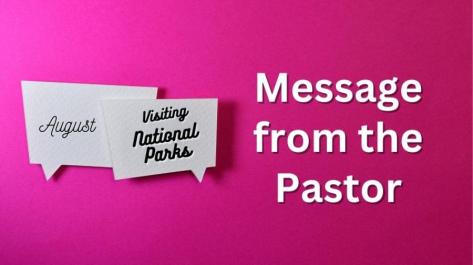Visiting National Parks

Visiting some of the marquee national parks in August - Yellowstone (WY), Glacier (MT), Theodore Roosevelt (ND), Devil's Tower, Wind Cave, and Jewel Cave (SD), there are some things I heard over and over again: how humans have changed the environment around them, what certain spaces meant to the indigenous people who have called these places home for thousands of years, the fragility of systems and species in the face of warming temperatures and drought, and the ways some ecosystems used to stretch for hundreds of miles and now are confined to a few hundred acres of protected space. These big western parks uniquely capture the American tensions around land use, human power systems, climate change, and the ways animals, plants, and other living things do not get a vote in what their futures will look like.
Meanwhile, tourists from all over the world crowded around a juvenile male moose on a trail in Glacier National Park to get a good picture. Here's ours. You are welcome.
I have mentioned before that I have a long-standing affection for tourist towns - Wisconsin Dells, Gatlinberg and Pigeon Forge, TN, and the like charm me with their absolute naked intent to separate people from their money in as efficient a manner as possible. I adore the neon kitschy gift shops and fudge stores and the "rainy day" attractions with their cheap plastic scenery and their front of house workers with accents from all over the globe. I appreciate the honesty of these places more than anything else. There's no pretense of a greater cause or any wonder of nature.
Many such places crop up in proximity to national parks or other natural attractions, of course; Gatlinberg and Pigeon Forge are right at the entrance to the Great Smoky Mountains National Park, and the Wisconsin Dells (as anyone who has taken multiple Duck tours can tell you) is a natural air conditioner whose geography has attracted people during the hot months from time immemorial.
As we traveled through the tourist towns into the parks, there was a moment where the neon faded and there were no more signs hawking mini-golf and overpriced pie, and we found ourselves surrounded by the natural wonder of the given park.
And yet.
The roads we traveled in the park, the bleachers and lodges around the Old Faithful geyser in Yellowstone, even the welltraveled trails with interpretive signs - we have really left very little "untouched." It is still an experience curated by human hands and with human intent, even in the mountains and amongst the bison (re-introduced, incidentally, by human efforts).
I didn't stand on the Trail of the Cedars in Glacier National Park and feel, ever, that I was alone in the world with these giants that predated the American Revolution. I didn't gaze on the geysers and marvel and the destructive power of the supervolcano so obviously right under our feet. Instead, I noted the boardwalks carrying feet like mine over fragile sulfuric ground and through threatened species. I saw hundreds of signs saying not to feed bears, prairie dogs, moose, and other wildlife. I spent time breathing in the smog of a Yellowstone valley traffic jam, where the volume of cars was forcing more lanes to be built so people could see the bison.
Stewardship of creation is a task divinely appointed to humans very early in the story (Genesis 2 and Psalm 8, to be specific). The national parks are these spaces of contradiction, where we are trying to both preserve a fragile world and give access to it by humans so that we can value the fragile world and try to protect even more. Whatever we touch, changes. That's true in our backyards and in giant national parks. The point is not necessarily to touch nothing at all, but rather to make our touch gentle, knowing, and responsible. Humans have walked the earth for thousands of years, and God has provided for us. We praise this whenever we sing "Great is Thy Faithfulness" and "O God, our Help in Ages Past." That also means we are accountable for the changes we make, good and bad.
What spaces evoke this contradiction for you? How do you move through and into the natural world, and what do you leave behind without intention? What does a gentle hand look like in the place that means the most to you?
Grace is not just for humans, but for the whole of creation. May we be a means of grace to a world in profound need of just that.
Blessings,
Rachel
